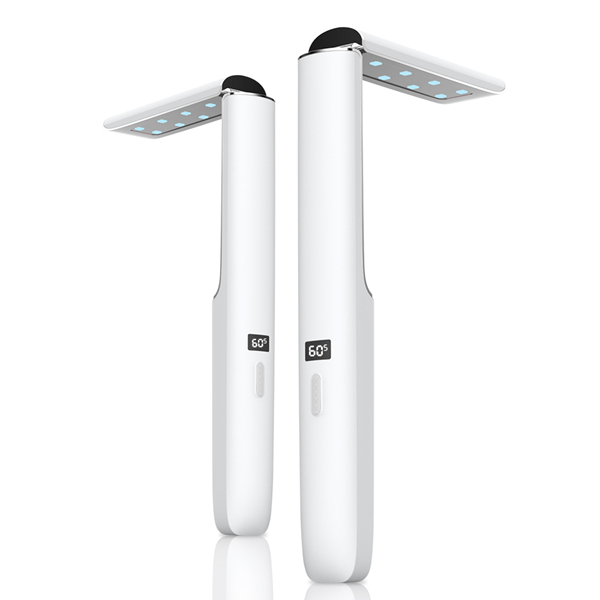1. What is UV?
First, let’s review the concept of UV. UV, i.e. ultraviolet, i.e. ultraviolet, is an electromagnetic wave with a wavelength between 10 nm and 400 nm. UV in different bands can be divided into UVA, UVB and UVC.
UVA: with a long wavelength ranging from 320-400nm, it can penetrate clouds and glass into the room and the car, penetrate into the dermis of the skin and cause tanning. UVA can be subdivided into uva-2 (320-340nm) and UVA-1 (340-400nm).
UVB: the wavelength is in the middle, and the wavelength is between 280-320nm. It will be absorbed by the ozone layer, causing sunburn, skin redness, swelling, heat and pain, and blistering or peeling in severe cases.
UVC: the wavelength is between 100-280nm, but the wavelength below 200nm is vacuum ultraviolet, so it can be absorbed by the air. Therefore, the wavelength at which UVC can cross the atmosphere is between 200-280nm. The shorter its wavelength is, the more dangerous it is. However, it can be blocked by the ozone layer, and only a small amount will reach the surface of the earth.
2. Principle of UV sterilization?
UV can destroy the DNA (deoxyribonucleic acid) or RNA (ribonucleic acid) molecular structure of microorganisms, so that bacteria die or cannot reproduce, so as to achieve the purpose of sterilization.
3. UV sterilization band?
According to the international ultraviolet Association, “the ultraviolet spectrum (the ‘sterilization’ region) which is very important for water and air disinfection is the range absorbed by DNA (RNA in some viruses). This sterilization band is about 200-300 nm”. It is known that the sterilization wavelength extends to more than 280nm, and now it is generally considered to extend to 300nm. However, this may also change with more research. Scientists have proved that ultraviolet light with wavelengths between 280nm and 300nm can also be used for sterilization.
4. What is the most suitable wavelength for sterilization?
There is a misunderstanding that 254 nm is the best wavelength for sterilization, because the peak wavelength of low-pressure mercury lamp (determined only by the physics of the lamp) is 253.7 nm. In essence, as described above, a certain range of wavelengths have bactericidal effect. However, it is generally considered that the wavelength of 265nm is the best, because this wavelength is the peak of DNA absorption curve. Therefore, UVC is the most suitable band for sterilization.
5. Why did history choose UVC LED?
Historically, mercury lamp was the only choice for UV sterilization. However, the miniaturization of UVC LED components brings more imagination to the application scene, many of which can not be realized by traditional mercury lamps. In addition, UVC led also has many advantages, such as fast startup, more allowable switching times, available battery power supply and so on.
6. UVC LED application scenario?
Surface sterilization: high frequency public contact surfaces such as medical appliances, maternal and infant supplies, intelligent toilet, refrigerator, tableware cabinet, fresh-keeping box, intelligent trash can, thermos cup, escalator handrail and ticket vending machine button;
Still water sterilization: water tank of water dispenser, humidifier and ice maker;
Flowing water sterilization: flowing water sterilization module, direct drinking water dispenser;
Air sterilization: air purifier, air conditioner.
7. How to select UVC LED?
It can be selected from the parameters such as optical power, peak wavelength, service life, output angle and so on.
Optical power: the UVC LED optical power available in the current market ranges from 2MW, 10 MW to 100 MW. Different applications have different power requirements. Generally speaking, the optical power can be matched by combining the irradiation distance, dynamic demand or static demand. The larger the irradiation distance, the more dynamic the demand, and the greater the optical power required.
Peak wavelength: as mentioned above, 265nm is the best wavelength for sterilization, but considering that there is little difference in the mean value of peak wavelength among manufacturers, in fact, optical power is the most important index to measure sterilization efficiency.
Service life: consider the demand for service life according to the service time of specific applications, and find the most suitable UVC led, which is the best.
Light output angle: the light output angle of the lamp beads encapsulated with plane lens is usually between 120-140 °, and the light output angle encapsulated with spherical lens is adjustable between 60-140 °. In fact, no matter how large the output angle of UVC LED is selected, enough LEDs can be designed to fully cover the required sterilization space. In the scene insensitive to the sterilization range, a small light angle can make the light more concentrated, so the sterilization time is shorter.
Post time: Sep-23-2021
